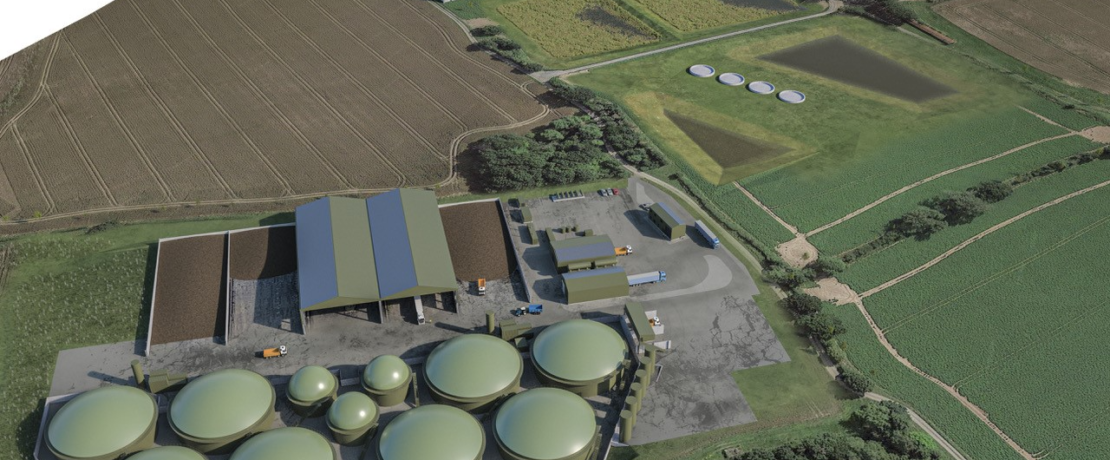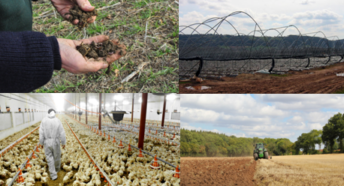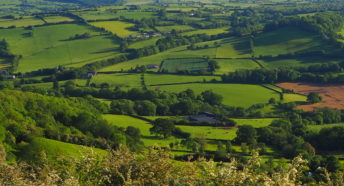Anaerobic digester plan is a major threat
We welcome any attempt to tackle the chicken poo pollution in the lovely River Wye. But the plan for this massive anaerobic digester will create more problems than it solves. We outline our objection to this planning application below.
A proposal for a major industrial anaerobic digester plant poses a major threat to our rural landscape, sensitive ecosystems, road network, air quality, and human health.
The steady proliferation of intensive poultry units (IPUs) over more than two decades has played a major role in nutrient pollution which has severely damaged our rivers and which is rightly the focus of increasing media and political attention, locally and nationally. It is estimated that more than 16 million broiler chickens destined for the food giant, Avara are within Herefordshire, producing about 290,000 tonnes of manure per annum. The manure is rich in nutrients, especially phosphorus but also nitrates which leach into the River Wye catchment.
A current planning application for a vast, industrial scale anaerobic digester (AD) plant in open countryside 10 Km northeast of Hereford purports to provide a solution to the nutrient problem. ADs break down organic matter to produce methane, which can be used as a fuel, and carbon dioxide. The resulting nutrient-rich digestate can be used as a fertiliser, but there is simply a huge excess which requires disposal.
The proposed development claims that it will use a novel system to strip the nutrients from the manure and the digestate, producing methane which can be fed into the national grid. Sounds good doesn’t it, so what are the main issues?
Scale and landscape
This is a 19Ha (47 Acre) industrial waste site in open countryside, the area of 27 football pitches. It will comprise 8 huge digester tanks 34 metres in diameter and other massive storage buildings, up to 16 metres high. The development would be a major detriment to a deeply rural landscape and close to Ocle Pychard Conservation Area.
Unproven untested technology
The application gives no detail of the technology used and no evidence of its efficacy, raising serious concerns over nutrient discharge into the sensitive River Wye catchment.
Transport Issues
32,403 two-way trips per annum of which 18,617 HGV and 7586 tractor trips
Ammonia and odour
Air quality is already poor in this area and environmental limits for ammonia exceeded. Ammonia is emitted in quantity from manure and is going to be a particular problem for a site intended for the transport, tipping and handling of 100,000 tons of poultry manure per year. There is a total failure to address the issue of ammonia.
Human Health
Ammonia is toxic to humans and contributes to harmful particulate pollutants (PM2.5) which are an established cause of cardiovascular disease and cancer.
Harm to sensitive ecosystems
There is insufficient detail relating to potential nutrient pollution and a total failure to consider the issue of ammonia emissions and their impact on local sensitive ecosystems including closely adjacent ancient woodland.
Monitoring
A plant of this size would require continuous monitoring by the already overstretched Environment Agency.
Contravention of National, Local and Neighbourhood Planning Policy
This is a brief summary of the detailed response submitted to Herefordshire Council.
For full details visit the following links which include HCPRE representations:
https://myaccount.herefordshire.gov.uk/documents?id=3005ac5e-667a-11ed-9063-005056ab11cd
We’re opposing this application for the reasons above and are employing professional help to support or own experienced volunteers in this objection. If you would be interested in joining the fight against unsustainable development plans please email admin@cpreherefordshire.org.uk. Our friendly team will get right back to you!









